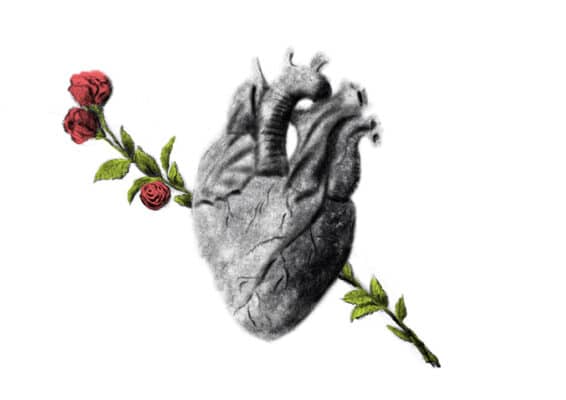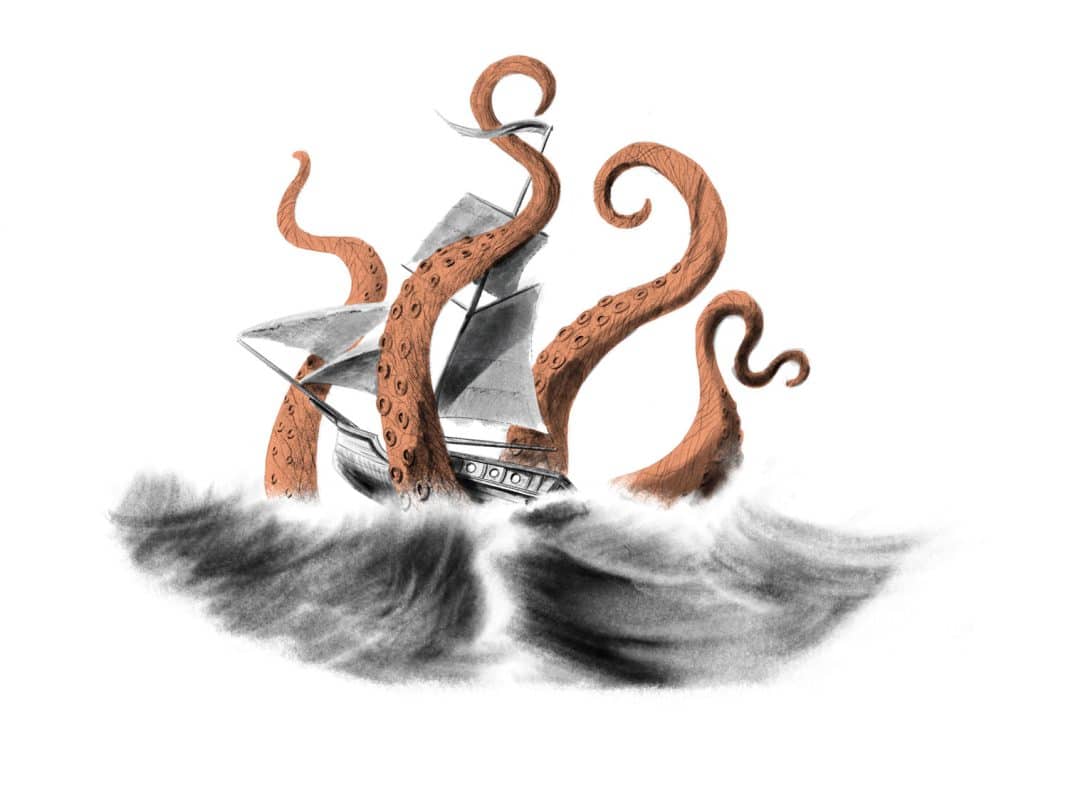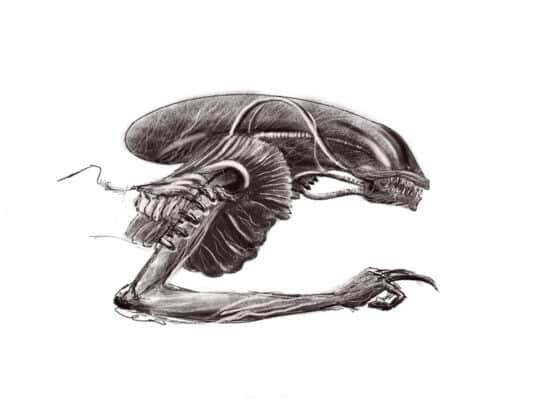
The heart: an eternal symbol from ancient history
The heart: an eternal symbol from ancient history 22/08/24 SUMMARY The heart is an element with countless nuances, meanings that have evolved over the centuries
BLACK FRIDAY – Only for Newsletter subscribers
Would you like to receive your order by CHRISTMAS? Make your purchase by December 1st.
Would you like to receive your order by ❤️ VALENTINE’S DAY? Make your purchase by January 25th.
CHRISTMAS CLOSURE – New orders will be processed from 8 January 2025
SUMMER CLOSURE 2024 – New orders will be processed from 19 August 2024 – 10% on the entire Shop

“Far, far below in the abyssal sea its ancient, undisturbed, dreamless slumber slept the Kraken [ …]” (Lord Alfred Tennyson)
Violent and the enemy of man, the Kraken is a legendary aquatic monster of abnormal size that rests on the bottom of the North Seas. So large that it can be mistaken for a group of islands, to some it looks like a giant octopus, with mighty tentacles capable of enveloping boats and dragging them into the deep.
A fascinating legend? Not really.
The Kraken could identify the giant cephalopods that really inhabit the deep, such as the Giant Squid or Colossal Squid. Linnaeus himself, the father of the modern scientific classification of living organisms, speaks of the Kraken, and its name often returns in the chronicles of explorers.
In a few lines I will tell you about the legends, forms, and descriptions that can describe the Kraken. Before taking off, however, here are two premises:
– Kraken does not have an unambiguous description. Big octopus or super-crab? Both. Remember that the Kraken remains a legendary animal, and the images we are able to paint are taken from travelers’ descriptions or tales of myth. These descriptions, whether vague or exaggerated, are never unambiguous.
– The Kraken is not part of Norse mythology. The Kraken is part of Scandinavian legends, asleep on the cold depths of the North Sea. For this reason, it is often believed to be part of Norse mythology, among Vikings and Dakars. Perhaps derived from older myths, such as the hafgufa, the kraken is described in much more recent times than the Viking Age.
Some say that legends always have a kernel of truth, and this may be the case with the Kraken. From the descriptions that have come down to us, in fact, the sea monster was gigantic in size and appeared like a large octopus, with tentacles that could wrap around a ship.
Is there such a thing in nature? Yes.
The Giant Squid, for example, reaches a length of 13 meters from the fin to the tip of the two longest tentacles.
If we compare these dimensions with the boats typical of the North Sea, we can better imagine the grandeur of such an animal: a two-tree like the ketch, widespread for centuries in the North Sea, comes to 30 meters, slightly longer than the mythical drakkar with which the Vikings plied the same waves in earlier times. In the eighteenth century, when the Kraken populated the tales of Norwegian sailors, a popular vessel for fishing in the North Sea was the dogre, a two-masted vessel that hardly exceeded 15 meters in length.
The Giant Squid, in short, equaled in length most of the vessels that sailed off Scandinavia. Widespread in the depths of all oceans, it is also found in the waters that wash over Norway. Its appearance is eerie: it has giant eyes, a cape culminating in a fin, eight arms and two very long tentacles.
Is it aggressive? There are documented attacks, even in recent times, by Giant Squid on boats. In 1980 an Architeuthis (giant squid), for example, attacked a French submarine at a depth of 3,000 meters, and violent attacks have also occurred at the surface.
Often mentioned alongside the giant squid is another cephalopod that may have given rise to the Kraken myth: the even larger Colossal Squid (Mesonychoteuthis hamiltoni). The colossal squid, however, lives in a much more limited range, in the waters adjacent to the South Pole: some distance from Scandinavia. In essence, it is in no way possible that a Norwegian fisherman spotted one of these specimens.
Authors from the eighteenth century onward who describe the Kraken, in some cases associate it with a sea monster described as early as the Scandinavian Dark Ages: the Hafgufa. A giant beast, it is shaped like a couple of islands or tall rocks outcropping from the sea.
Even its name evokes a certain mystery, for in Old Norse Hafgufa literally means sea mist. Its huge silhouette, in short, appears to navigators in the mist covering the waters, without showing its forms in a definite way. There are two ancient texts describing Hafgufa the Norwegian “The Mirror of the King” and the Icelandic “The Saga of Odd the Archer.” In both cases, the monster is of such size that it is capable of devouring ships and whales, with a nose and mouth that appear to be made of rock and a body that is indistinguishable from an island.
This myth probably comes from the suggestion of Norse sailors crossing fog-covered fjords: in the poor visibility, they often had the impression that they could see islands that were not there before, as well as strange movements of the rock walls. As they crossed the narrow ravines with their boats, they feared passing through the jaws of the monster. As told in the stories, the navigators themselves hoped to leave the jaws behind before the Hafgufu closed its mouth.
In researching the Kraken one always comes across the Dane Erik Pontoppidan, author of “The First Attempt at a Natural History of Norway,” published in 1752. Pontoppidan describes the Kraken with great care, assuming that it is a real animal.
Pontoppidan tells us that the greatest danger to sailors was not related to actual attacks, but to the simple movements of the sea monster on the seabed, which could generate whirlpools of such power that they swallowed boats.
Pontoppidan’s description puts the Giant Squid and the Hafgugu together in the same creature, describing a sea monster that when it surfaces can be mistaken for many small islands, with tentacles so mighty that they can envelop and drag even a war frigate into the depths. The Kraken emits an odor that is particularly pleasant to fish , which thus approach it in large numbers, only to be eaten.
Of course, it seems absurd to believe that any scholar actually believed in the existence of the Kraken, but it should be remembered that many researchers of the time made similar assumptions. In this regard, I want to tell the sad story of Pierre Dénys de Montfort, an unfortunate naturalist who devoted his life to trying to prove the existence of giant octopuses, and in one of his works, in particular, he describes precisely the octopus-Kraken (le kraken-pieuvre in French).
In 1782 as many as 10 British warships suddenly disappeared, and Montfort made a very wild guess: it was a giant octopus! Unfortunately for him, the British report that it was, in fact, a hurricane. In addition to destroying ships, the hurricane also swept away Montfort’s reputation, who will end his life in utter poverty, starving to death in Paris, mocked by other scholars.
In fact, Montfort, in describing the Kraken, contributed to the discovery of the giant squid, the existence of which would not be proven until 1857.
An extremely valid naturalist, he cataloged and identified 129 genera of mollusks, with taxonomic discoveries still valid today.
Poor Montfort, in assuming the existence of the Kraken, paints a beautiful illustration. As a tribute to him, I have reinterpreted it in this article, in the cover painting.
Some authors, describe the Kraken as a huge crab. Wallenberg, a Swedish author, states in 1781 that the Kraken is also called “the crab fish,” later making a completely similar description in Pontoppidan.
The great charm of the Kraken, in short, lies precisely in theindeterminacy of its form, hovering between islands, octopuses, rocks and crustaceans. Mysterious and unknown, it will inspire extraordinary poets, painters and writers.
Personally, I like to think that the legend of the Kraken stems largely from the true observation of giant squid in the North Seas, although it is rare for them to reach the surface. A second hypothesis, which is very fascinating, puts together the suggestion of the Kraken with Iceland’s undersea volcanic activities, with their continuous and eerie bubbling.
For me, the Kraken is the sea monster that most represents the ambiguous mystery of the deep, undefined and indefinable, true and legendary. A beautiful Latin proverb says:
In mari multa latent
In the sea, many things are hidden
So is the Kraken and its fascinating secrets.

The heart: an eternal symbol from ancient history 22/08/24 SUMMARY The heart is an element with countless nuances, meanings that have evolved over the centuries

What is the Alien, or Xenomorph? Let’s find out its story, the meanings and symbols of the scariest predator in the universe. Anyone who has